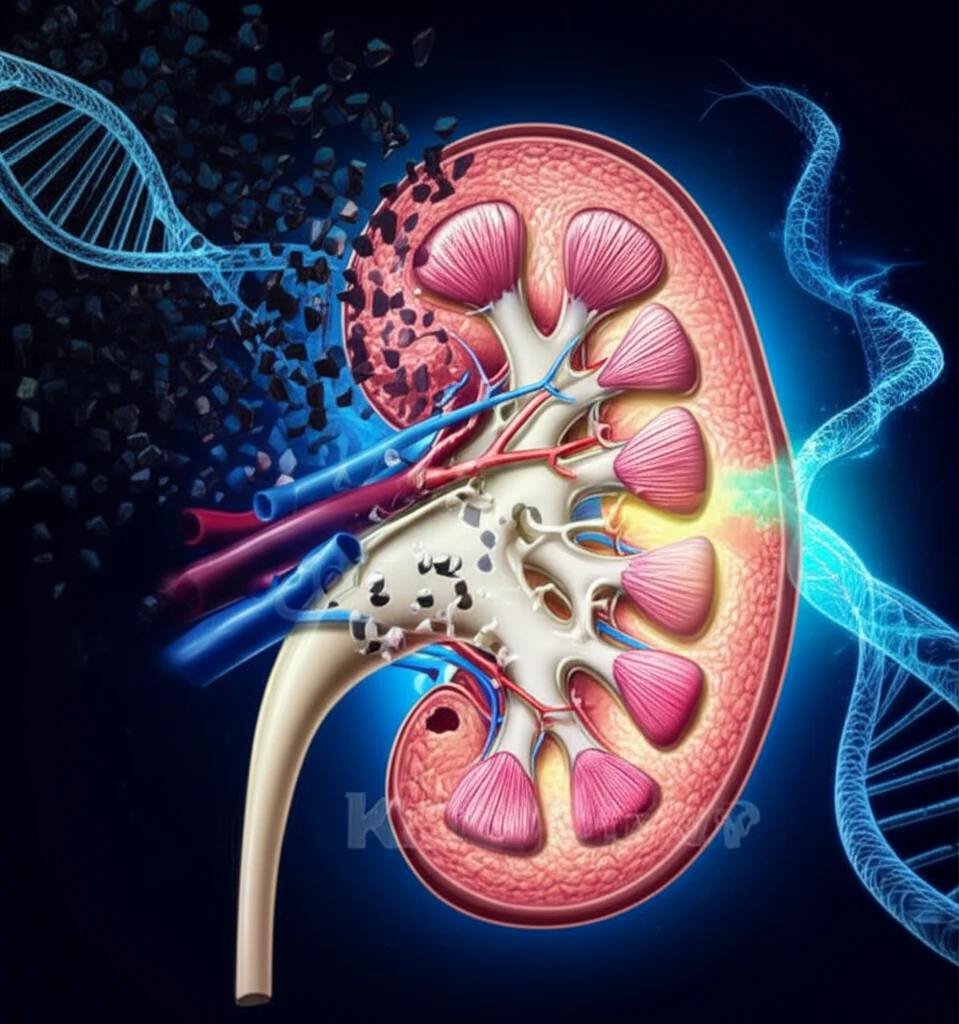
C3 Glomerulopathy Breakthrough: AAV Gene Therapy Shows Promise
"Gene transfer offers a new therapeutic avenue for lethal kidney disease."
C3 glomerulopathy (C3G) is a rare and devastating kidney disease characterized by abnormal activation of the alternative pathway (AP) of the complement system, part of the body's immune defenses. This overactivation leads to kidney damage and, ultimately, kidney failure. Current treatments are limited, and new therapeutic strategies are urgently needed.
Factor H (FH) is a crucial protein that regulates the AP, preventing it from attacking the body's own tissues. Genetic mutations that impair FH function are strongly linked to C3G. Therefore, restoring FH activity in the kidneys holds significant therapeutic potential.
Researchers have explored adeno-associated virus (AAV)-mediated gene transfer as a way to deliver a functional FH gene directly to the body. AAVs are safe and effective viral vectors for gene therapy, offering the possibility of long-term FH expression and disease control. This article highlights the recent research demonstrating the therapeutic efficacy of AAV-mediated FH gene transfer in a mouse model of lethal C3G.
Can AAV Gene Therapy Halt C3 Glomerulopathy?

A study published in Molecular Immunology has investigated the use of AAV-mediated gene transfer to treat C3G in mice. The researchers focused on a modified mouse model lacking functional FH and properdin, predisposing them to develop severe C3G. These mice typically succumb to the disease within 10–12 weeks.
- Significantly improved survival rates: AAV-mFH1-4.6-8.19-20 treated mice demonstrated remarkable improvement, with 9 out of 10 mice surviving the 12-week experiment. In contrast, all control mice that received control AAV died within 6 weeks.
- Reversed disease markers: The AAV-mFH1-4.6-8.19-20 treatment reversed the established C3G in the mice, as evidenced by a halt in plasma C3 and factor B consumption, reduction in proteinuria, leukocyturia, and hematuria.
- Restored kidney health: Histological analysis revealed that the AAV-mFH1-4.6-8.19-20 treatment led to a significant reduction in glomerular C3 deposition, with kidney histology largely returning to normal.
Looking Ahead: A New Era in C3 Glomerulopathy Treatment?
This study provides a crucial proof-of-concept for AAV-mediated FH gene transfer as a potential treatment for C3G. While the results are promising, further research is needed to translate these findings to human patients.
Future studies should focus on optimizing the AAV vector, determining the optimal dose and route of administration, and assessing the long-term safety and efficacy of the therapy in humans. Moreover, patient selection criteria and biomarkers to predict treatment response need to be established.
Despite these challenges, AAV-mediated FH gene transfer represents a significant step forward in the development of effective therapies for C3G. With continued research and development, this approach could offer hope for patients suffering from this devastating disease.
